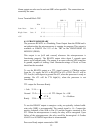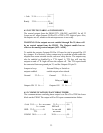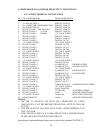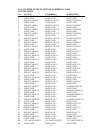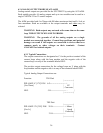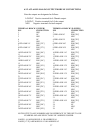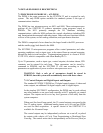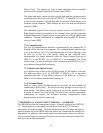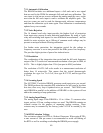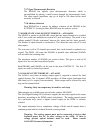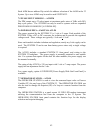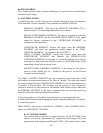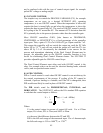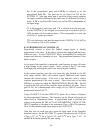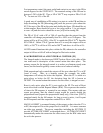40
7.2.1 Automatic Calibration
The RRAIM includes two additional inputs: a full scale and a zero signal
that are used by the PIOM for automatic full scale and zero calibration. The
zero input is read on one scan to calibrate the analog amplifier zero, on the
next scan the full scale input is read to calibrate the amplifier gain. The
next two scans are used to read the thermocouple reference temperatures
and then the calibration cycle starts again. Thus calibration is automatically
updated every two seconds.
7.2.2 Noise Rejection
The 16 channel reed relay input provides the highest level of protection
from input noise present in most industrial applications. By using a 3-pole
relay and switching both inputs for true differential measurement, and the
shield for noise rejection, up to 180vac of common mode voltage may be
present on an input without effecting calibration.
For further noise protection, the integration period for the voltage to
frequency converter is set at one period of the 60Hz power line frequency.
The provides high rejection of power line induced noise.
7.2.3 Resolution
The combination of the integration time period and the full scale frequency
output of the V/F results in a measurement resolution of one part in 5000, or
0.02%. This is slightly higher than 12 bit [one part in 4096] resolution.
The resolution of 0.02% full scale results in a measurement resolution of
better than 14 microvolts. This means that the typical thermocouple
resolution for a type J or T is 0.5
o
F, for a type K 0.75
o
F, and for type R or
S 2.0
o
F.
7.2.4 Scanning Speed
The SYSTEM 32 with the RRIAM, measures each input twice per second.
The PIOM performs the complete PID calculations for all loops in less than
this time, thus every loop is updated twice per second. The PIOM scans
each RRAIM in parallel so the addition of RRAIM's to the system will not
add to the scanning or loop update time.
7.2.5 Analog Input Range
The analog input range of the RRAIM is -10 to +60mv. To measure other
inputs, such as 4-20 ma, scaling resistors are used. The RRAIM contains an
isolated section for the purpose of mounting scaling resistors. These
resistors may be mounted by the factory [order A32-SI as needed] by the
user.
7.2.6 RTD Excitation Voltage
The excitation voltage for RTD's is 10vdc at 50ma max. When using RTD's,
a max current of 3ma per sensor is recommended to avoid self-heating of
the RTD as well as avoiding overloading the RRIAM power supply.



